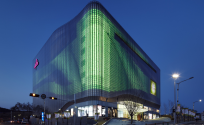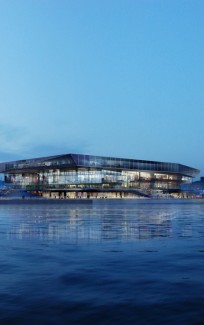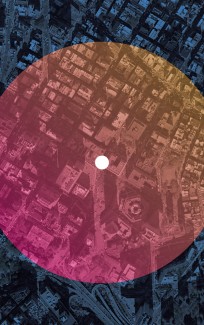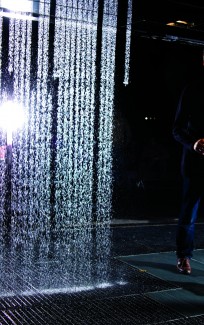Media Architecture in China
Understanding the different roles of public art is one of the keys to understanding the difference between media architecture development in China and the West. Our Chinese keynote speaker, Professor Chang Zhigang, reflects on both differences and similarities – and on the challenges that media architecture poses to industry and architecture all over the world.
Below his answers, you can see a brief video interview with our 2012 keynote Sanxing Cao, Vice dean of the Communication University of China, on the same subject.
Which new and innovative Chinese media architecture projects are of particular interest to non-Chinese people?
In the recent years, a number of projects have been completed in China. They include projects from both Chinese and Western architects. Western designed projects include the Wuhan Hanjie Wanda Plaza, designed by UN Studio, and BIAD ZhengJianWei Lighting Studio, which just won the IALD Excellence Award. In terms of gaining international recognition, I think this project may be interesting to non-Chinese people. Moreover, Jingya Hotel, located in Beijing is also an interesting example of media architecture.
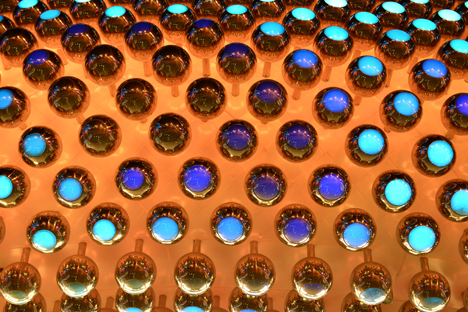
Facade detail from BIAD Zheng JianWei Lighting Studio. Photo from www.illumni.com
Meanwhile, there are also some Chinese architects working on media architecture. Among the Chinese projects are the 2010 EXPO Shanghai Corporate Pavilion designed by Zhang Yonghe, the Wuhan Center media façade designed by Wang Yanzhi, and the National Swimming Center media animation designed by Zheng Jianwei.
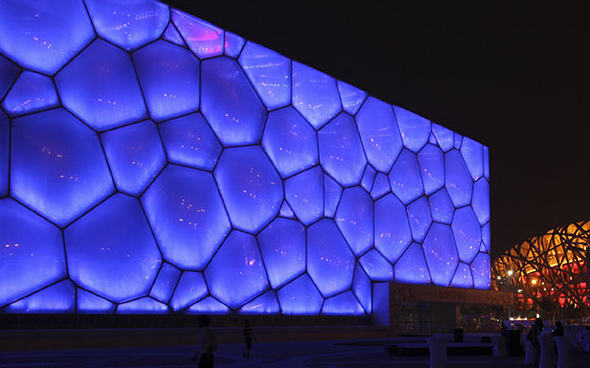
The media facade of Beijing’s National Swimming Center is designed by Zheng Jianwei and one of a growing number of entirely Chinese media architecture project. Photo from www.water-cube.com
Do you see any significant differences between a Chinese/Asian take on media architecture and a Western take on media architecture?
Media architecture is originally a European thing, but Chinese media architecture has developed greatly, and we’ve seen a large number of projects in the recent years. The gap in technology has been reduced; so today the most important difference between Western and Chinese media architecture is a conceptual one. As for the Western world, public art arose in the 1960s and has become a generally accepted concept. This influenced Western designers, who applied and worked with public art in their projects. In China, however, public art is still a new thing – artists and designers do not yet have a deep understanding, and in consequence there is neither much interaction nor much public involvement in Chinese projects.
Media architecture in China mostly includes commercial projects, in line with many Western projects. These projects use new media technology to create a spectacle to show creative power and to attract people. But some projects are different. A lot of small projects are related to human daily public life. One must also remember that the technology of the Internet and media is universal, but the implementation concept is what is key to further media architecture development and the future of media architecture.
What is the biggest challenge for people working with media architecture projects (regardless if they’re from China or not)?
Media architecture arises as a new thing both in China and the Western world. The idea of innovation and industry change not only challenges architects, but also the owners and users.
Regarding the challenge to industry: Architecture is no longer limited to architecture itself or the private art works of architects. Instead, a fresh architecture design pattern is required in the cooperation between different fields of multi-industries. Media architecture’s future development will definitely trigger the transformation of the industry chain and design process. The design will become more and more comprehensive, breaking all the traditional processes and stages, with higher standard requirement on technology. More diversified and professional solutions and concepts will be employed, and a new design pattern – design resources, procedure, and teamwork – will be established. The contemporary outstanding media architecture projects are usually installations with scientific properties. This is the outcome of architects, façade designers, and artists joining forces. And architects, to an increasing degree, become comprehensive installation artists and directors.
Regarding the challenge that media architecture poses to education: There is definitely a challenge to architects’ profession breeding and education, but media architecture is also an opportunity to combine architectural arts and techniques. Architectural education should pay more attention to visual communication, graphic design, advertising planning, synthetic arts, media animation, installation arts and public arts. The overall coordinating ability, multi industries integrating ability and the sensitivity to society changes will be much more important than ordinary techniques.
Regarding the challenge to aesthetics: For a long time, the aesthetics and value orientation of architecture have been oriented towards physical factors such as the structure, construction, materials etc. But media architecture is transforming architecture from physical structure to symbolization and virtualization mainly by media content. This rise of aesthetic objects with new forms and standards will in a short while challenge and contradict traditional aesthetics of architecture.
Regarding the challenge to media architecture itself: The current media architecture is still in the stage of just simply mixing various elements and has not yet constructed an inner logic, values, or theoretical system. Sometimes it even serves just as an artifice of commercial purpose. However, media architecture is not a simple mix of new media technology and architecture, it’s not the sum total of those factors, it is an essential innovation.
Regarding the challenge to space and communication: As the entrance between a real world and a virtual world, media architecture can contain both real space and virtual space, which is its most extraordinary feature. By blurring the borders between space, the communication of people and architecture, it can reach a new level. Media architecture should not only be a visual performance, it should also be a connection that can effectively organize the whole urban space, so as to achieve the purpose of comprehensive communication.
In this video, Dr. Hank Haeusler interviews the 2012 keynote speaker, Vice Dean Sanxing Cao. Watch it for even more reflections on media architecture in China.
